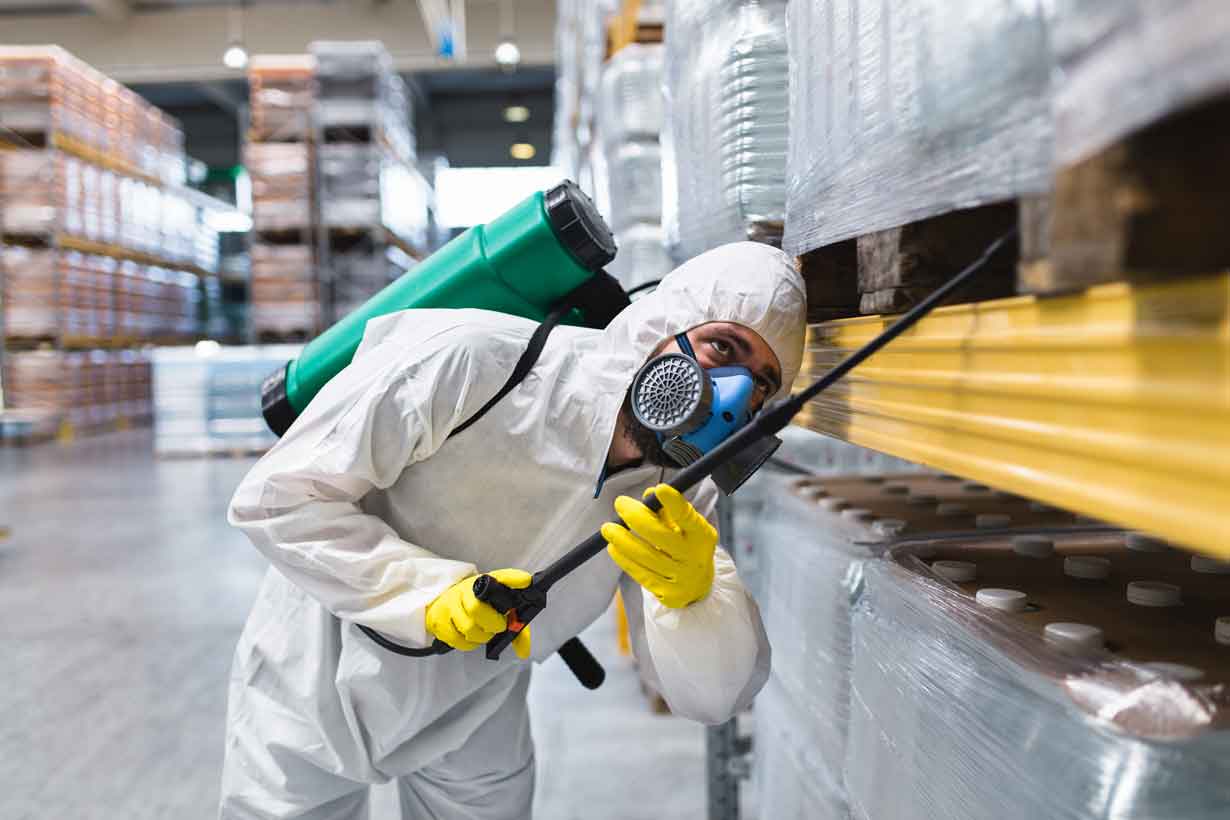

N95 Masks vs. Surgical Masks vs. Cloth Masks: What's the Difference?
By Grainger Editorial Staff 6/10/20


Not long ago, respirators and surgical masks were worn almost exclusively by workers whose jobs required them. But during the COVID-19 pandemic, many kinds of protective face covering became an increasingly common sight in public places. Their visibility raises an obvious question: what's the difference between N95 masks vs. surgical masks vs. respirators vs. dust masks vs. cloth masks? What kind of protection do they offer?
Cloth Masks
The Centers for Disease Control and Prevention (CDC) has recommended that people wear cloth face coverings in public to help prevent the spread of COVID-19, regardless of whether they have a fever or other COVID-19 symptoms. In December 2020, the CDC recommended that people wear facemasks whenever they are outside the home, and at home whenever someone in the household has had potential COVID-19 exposure or has been diagnosed with COVID-19.
There is evidence that COVID-19 can be transmitted by people who don't have symptoms. In December 2020, the CDC cited estimates that around half of COVID-19 infections are transmitted by people who have no symptoms. Wearing cloth masks helps slow the spread of the virus, which is primarily transmitted from person to person through respiratory droplets produced when we talk, cough or sneeze.
Masks are particularly important in places where social distancing is hard to maintain, especially in areas where there is significant community-based transmission.
- While cloth masks and disposable face coverings can help prevent the spread of COVID-19 and other illnesses, they are not considered personal protective equipment (PPE).
- Cloth masks are intended to be cleaned and reused, while disposable face coverings, surgical masks and disposable N95 respirators are not.
- Cloth masks are easy to obtain and simple to make at home. On the other hand, surgical masks and N95 respirators can't be made at home and should be considered critical supplies, according to the CDC.
- Some cloth face coverings have one-way valves or vents that make exhalation easier, but according to the CDC, this type of mask does not prevent the wearer from transmitting COVID-19 to others (source control), and for this reason the CDC does not recommend them.
Are Two Masks Better than One?
In February 2021, the CDC recommended that people consider adding more protection by ensuring that masks fit tightly around the face and have more layers of filtration. According to the agency, one way to achieve this is by wearing a disposable mask underneath a reusable cloth mask. This approach helps close up the gaps that can occur around many disposable masks, such as medical procedure masks. The cloth mask that covers the disposable mask should hold the edges of both masks against the face. Make sure you can still see and breathe easily.
The CDC guidance states that two disposable masks should not be worn together, and that disposable KN95 masks should not be combined with any other masks.
The new CDC guidance also suggests some other ways to improve mask protection that do not involve double masking:
- Use masks the have a nose wire to allow for a closer seal at the top
- Use a mask fitter, a reusable wire device that helps hold the mask to your face.
- Check for a tight fit by cupping your hands around the edges of the mask and making sure that air is not flowing out of the sides or top of the mask.
- Choose cloth masks that have multiple layers of fabric.
- Knot and tuck the ear loops of a medical procedure mask, giving it a more snug fit around the edges. (The CDC links to this video demonstration from UNC Health).
General Tips for Wearing Cloth Masks
This guidance for wearing cloth masks is based on information from the CDC and Mayo Clinic:
- Ensure that cloth masks cover the nose and mouth and are secured with ties or ear loops, fitting snugly but comfortably, without gaps.
- Ensure that cloth masks cover the nose and mouth and are secured with ties or ear loops, fitting snugly but comfortably. Don't touch your mask while wearing it. If you do touch it, wash or sanitize your hands.
- When removing your mask, don't touch your face—especially your nose, eyes and mouth—or the front of the mask.
- After removing your mask, wash your hands immediately.
- Regularly clean your mask in a washing machine, per manufacturer's instructions.
- Make or look for cloth masks that have more than one layer of fabric. To wear a gaiter as a mask, choose one with two layers, or fold it to make two layers.
- To help prevent fogging when wearing glasses with a face covering, choose a mask with a nose wire or tight-fitting nose area.
- Remember that while wearing a cloth mask is an important precaution against the spread of COVID-19, it's still important to wash your hands frequently and follow social distancing guidelines.
- Remember that cloth face masks are not a substitute for required respiratory protection.
Surgical Masks
Surgical masks are loose-fitting, disposable coverings for the nose and mouth. They are intended to be worn by healthcare workers. They are fluid resistant and protect the wearer against large droplets, splashes and sprays, according to the CDC. They also capture the wearer's respiratory droplets, helping to protect patients against contamination.
- Surgical masks are not considered respiratory protection. According to the CDC, they don't provide reliable protection from inhaling smaller airborne particles.
- Surgical masks are cleared for use in medical settings by the Food and Drug Administration (FDA), which evaluates data and claims provided by the mask manufacturer.
- Surgical masks are tested according to standards published by ASTM International as ASTM F2100-19. These standards describe bacterial filtration efficiency, sub-micron particulate filtration efficiency, differential pressure, resistance to synthetic blood and flammability. Medical masks fall into three levels of barrier protection, which are described as follows by healthcare services company Cardinal Health:
- Level 1: low barrier protection
- Level 2: moderate barrier protection
- Level 3: maximum barrier protection
Medical Procedure Masks
There are also disposable face coverings that look similar to surgical masks but are not tested for fluid resistance and are not cleared for use in medical settings by the FDA. These are often called medical procedure masks.
N95 Respirators
N95 respirators are typically disposable and are commonly referred to as filtering facepiece respirators. OSHA defines a filtering facepiece respirator as "a negative pressure particulate respirator with a filter as an integral part of the facepiece or with the entire facepiece composed of the filtering medium."
- Filtering facepiece N95 respirators offer more protection against airborne particles than surgical masks or cloth face covers, because they are intended to be tight-fitting and can filter both large and small particles, including aerosols.
- N95 masks are tested and certified by the National Institute of Occupational Safety and Health (NIOSH) to ensure that the filtering facepiece can remove at least 95% of airborne particles.
- N95 are intended to be tight-fitting. Normally, wearers must pass pass a fit test to confirm a proper seal before using one. Due to concerns about a shortage of fit-testing kits and test solutions, OSHA is encouraging employers to prioritize fit-testing for those who must use N95 respirators in high-hazard procedures during the COVID-19 pandemic.
- Some manufacturers offer surgical N95 filtering facepiece respirators, which are cleared by the FDA for fluid resistance and also tested and certified by NIOSH as a respirator.
- N95 respirators are not to be worn by the general public as protection from COVID-19 per the CDC, to help optimize the supply for people respirators most.
Elastomeric Respirators: An N95 Alternative
Reusable elastomeric respirators, more commonly seen in industrial settings, can provide protection similar to disposable N95 respirators, according to the CDC, which offers guidance on elastomeric respirators for healthcare practitioners. Elastomoeric respirators can have a half facepiece or full facepiece, and they use replaceable filters to remove particles from the air. They also require cleaning, disinfection and other maintenance. Unlike surgical masks, elastomeric respirators are not cleared by the FDA for fluid resistance.
Dust Masks and Other Disposable Face Coverings
The phrase "dust mask" is used by some people to describe any disposable face mask, including N95 respirators. But dust masks are not necessarily the same as respirators and are often designed to protect the wearer only from irritants that are not toxic, like sawdust or pollen. These "nuisance dust masks" are not tested or certified by NIOSH to offer any level of respiratory filtration. The CDC's guidelines do not discuss nuisance dust masks, and there is no reason to believe that a non-NIOSH-certified nuisance dust mask would offer respiratory protection superior to that of a cloth mask.
Similarly, there are disposable face coverings that resemble surgical masks or medical masks but that are not tested for barrier protection according to ASTM standards and are not cleared for use in medical settings by the FDA.
Tips for Wearing a Cloth Face Mask at Work
Some people may find wearing a face mask uncomfortable when they're doing strenuous work or when they're working in a hot and humid environment. OSHA offers guidance for employers to help prevent the spread of COVID-19 while also protecting employees against heat-related illness. These are some of the best practices that OSHA recommends:
- Employers should make sure new workers and returning workers acclimatize to the working environment while wearing face coverings. (OSHA suggests acclimatizing after a week or more away from work.)
- Employers should prioritize wearing face coverings for workers when they're in close contact with other people, but they may allow workers to remove face coverings when they can safely maintain at least six feet of distance from other people.
- Employers should encourage workers to wear face coverings that fit comfortably and are made of breathable, moisture-wicking materials.
OSHA has published these and other recommendations both for outdoor work (such as in the construction, agriculture or oil and gas industries) and indoor work (such as in the manufacturing and warehousing industries).
Frequently Asked Questions
Surgical masks are not respirators and are not designed to offer respiratory protection to the wearer. They are cleared for use by the FDA for fluid resistance, and they can also help protect patients from respiratory droplets expelled by the wearer. Some manufacturers offer surgical N95 respirators, which are cleared by the FDA for fluid resistance and also tested and certified by NIOSH as respirators.
A disposable N95 mask is one type of N95 respirator—it is a negative pressure particulate respirator with a filter as an integral part of the facepiece or with the entire facepiece composed of the filtering medium. There are other types of non-disposable half-mask or full-mask respirators (also called elastomeric respirators) that can be equipped with N95 filters that have been tested and certified by NIOSH to provide the same efficiency of filtration as disposable N95 masks.
According to the CDC and OSHA, in manufacturing, construction and other environments, wearing one cloth face mask for a full shift may not be practical if the face covering gets wet or dirty. These agencies recommend providing making clean face coverings readily available, or providing disposable options, in case employees' face coverings need to be replaced.
Cloth face coverings are not PPE and can't be used as a substitute for required PPE such as N95 respirators. But cloth face coverings can still be an important protective measure against COVID-19, according to the CDC, especially in places where social distancing isn't possible, because they may help prevent people who don't know they're infected from spreading COVID-19.
Yes, the CDC recommends using a clean face covering each day.
According to the CDC, face shields provide eye protection for their wearers, but it isn't yet clear how effectively face shields can protect other people from their wearers' respiratory droplets (source control). For this reason, the CDC does not recommend face shields as a replacement for cloth face coverings. For people who must wear a face shield instead of a mask, the CDC notes that there is evidence that face shields extending around the sides of the face and below the chin can offer better source control, as can hooded face shields.
RECOMMENDED KNOWHOW FOR YOU

Safety Management
6 Tips to Help Prevent Slips, Trips and Falls
Identify the fall hazards in your workplace and implement a fall safety program. Check out these tips from Grainger so you can mitigate risk.
![]() Our Latest KnowHow
Our Latest KnowHow

Facility Pest Control: How IPM Helps Safely Manage Insects
Discover safe, compliant pest control with IPM. Find tips for insect monitoring, sanitation and safe insecticide use in commercial facilities.
The information contained in this article is intended for general information purposes only and is based on information available as of the initial date of publication. No representation is made that the information or references are complete or remain current. This article is not a substitute for review of current applicable government regulations, industry standards, or other standards specific to your business and/or activities and should not be construed as legal advice or opinion. Readers with specific questions should refer to the applicable standards or consult with an attorney.









